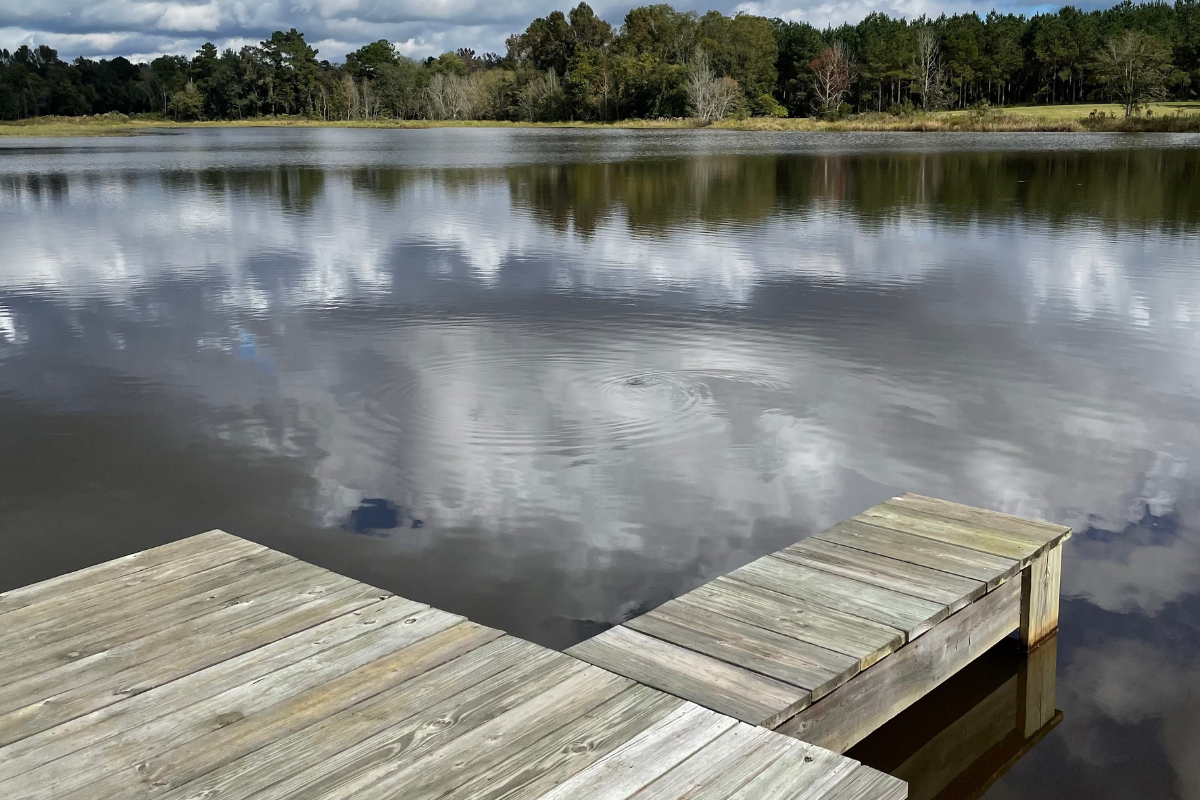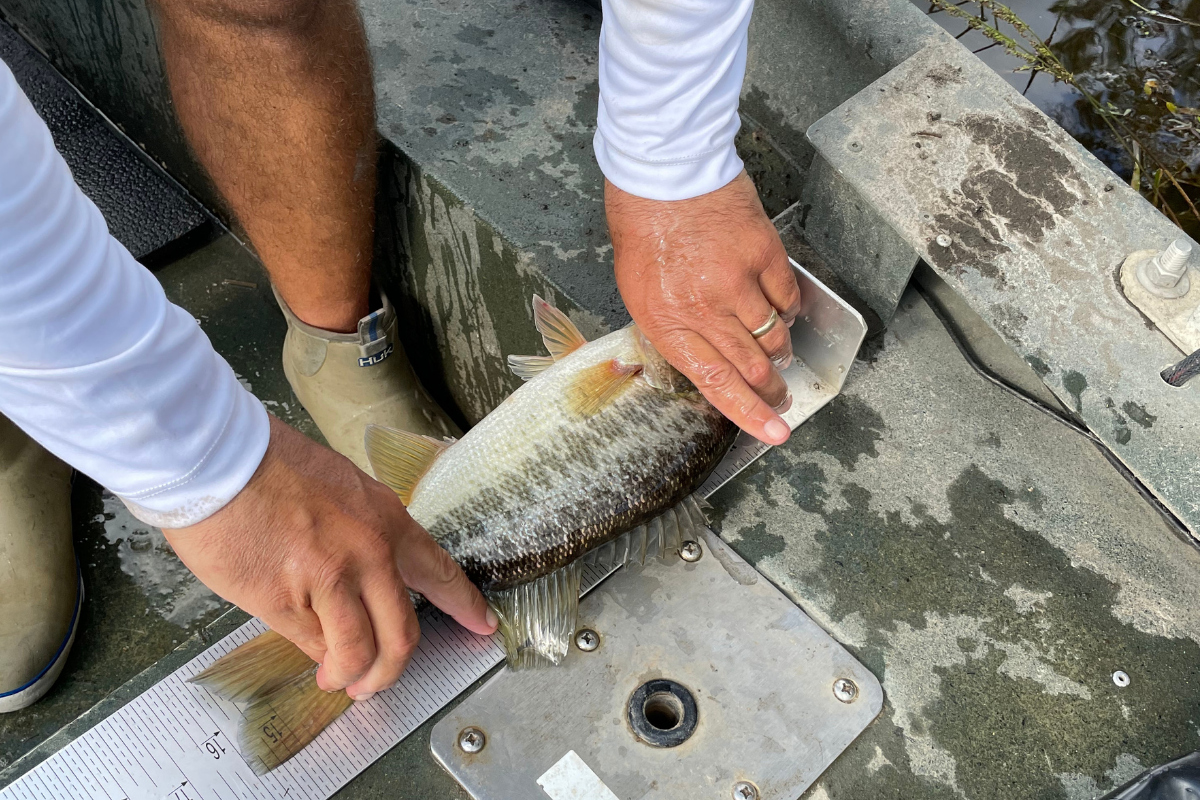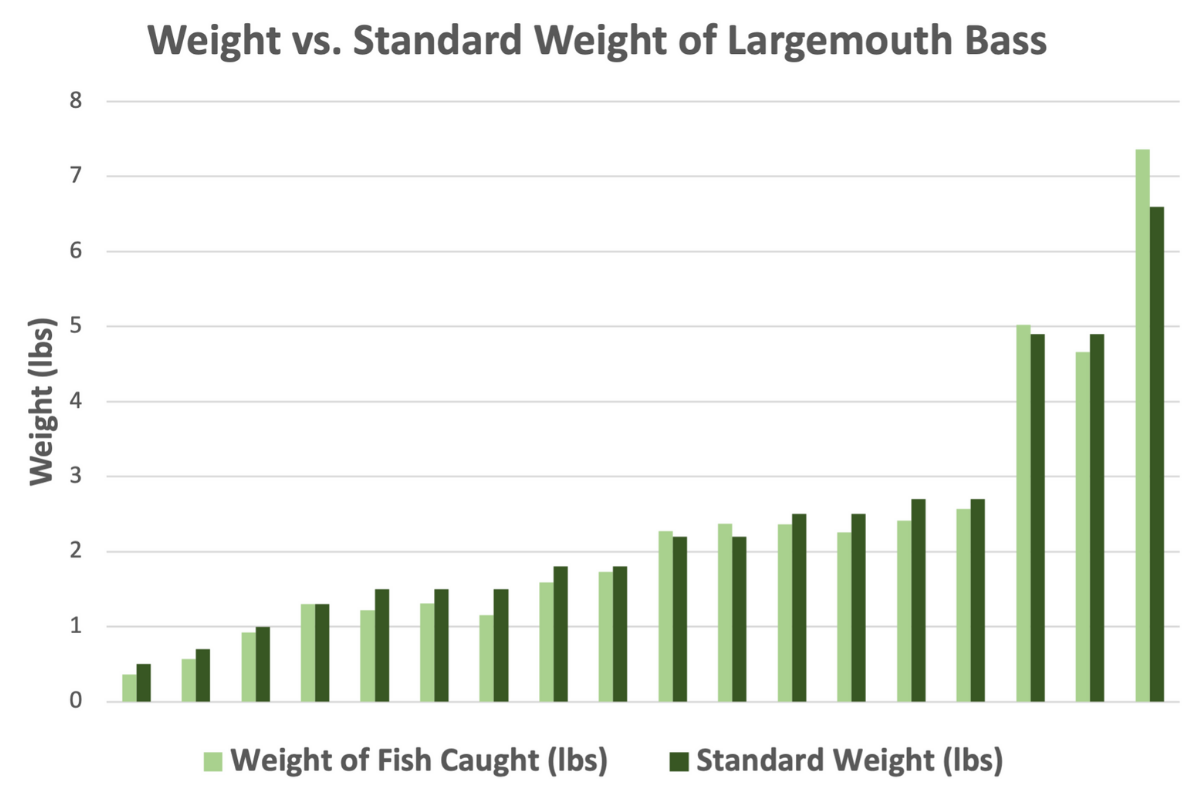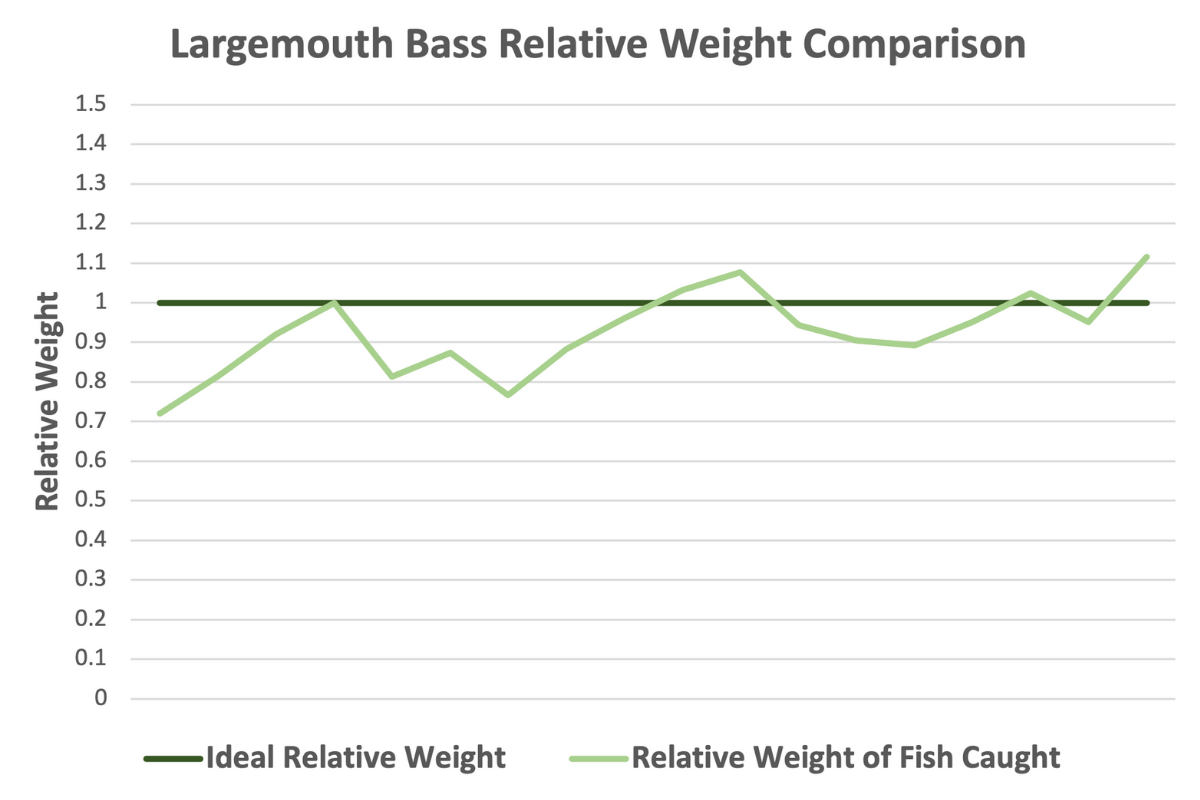How many pounds a year will a largemouth bass gain? Or what is the ideal largemouth bass growth rate in a healthy pond? Most of the research says that largemouth bass typically grow anywhere from 0.5 lbs to 2 lbs a year, depending on prey availability and other biological factors. If large numbers of bluegill are present and they can be easily captured by the bass, the growth is usually at the higher end of this range.
Through our electrofishing population sampling services, we see a wide range of largemouth bass growth rates. In the case where growth rates are low, it is usually a result of low prey numbers, too much vegetation in the pond, or a combination of the two. Even if prey numbers are sufficient, heavy vegetation provides extensive cover for sunfish and requires the bass to expend a significant amount of energy to capture the prey. This high energy expenditure for prey capture results in lower growth rates.
We recently sampled a 30 acre pond with some of the best largemouth bass growth we’ve seen in a short time frame. This pond was completely drained in 2016 when the dam broke and all the water was lost. The pond is fed by a creek which keeps it full of water. The broken dam was replaced with a concrete spillway right before we started managing and rebuilding the fish populations in this pond.

Once the pond was full of water again, we started stocking the pond with sunfish to establish a sufficient prey population for the bass that would be introduced later. We stocked 5,000 bluegill, 2,500 redear sunfish, and installed an automatic feeder to promote fast growth and heavy spawning. We also added some grasscarp to the pond because there was an issue with overgrown submerged vegetation.
As mentioned above, overgrown vegetation in a pond can inhibit bass growth because the sunfish populations have too many places to hide. This pond also was signficantly covered in lillypads, which can cause a myriad of issues. We sprayed the surface and submerged vegetation in the pond and were able to successfully get the vegetation cover to 10-20% of the total pond area.
Once the sunfish populations had been given a year to grow and spawn, we stocked this 30 acre pond with 1,500 hybrid largemouth bass. The goal for this pond, as stated by the owner, was to create a trophy largemouth bass fishery. Our management plan included making sure the vegetation didn’t regrow, and also to perform a population sample once a year to see how the fish were growing.

Sampling for Largemouth Bass Growth Rate
We performed an electrofishing sampling in 2020 and found healthy sunfish populations along with some largemouth bass that were close to 4 lbs. For the larger fish we caught, we were seeing a bass growth rate of 2 lbs per year, with most of the fish growing between 1-2 lbs per year.. This told us that the bass in this pond had plenty to eat, easy access to the food, and as a result they were growing fast.
Our most recent sampling performed in October 2021 showed similar results, with even larger bass a year later. We caught a wide range of largemouth bass, from less than 1 lb to 7+ lbs. Prior to measuring and weighing these fish, we could tell that these fish were healthy due to their width. The figure below shows the weight of the bass we caught during electrofishing versus the listed standard weight of a bass with the same length. At least half the fish we caught were above the standard weight that a healthy fish of that length should weigh.

The figure below helps to show the health of the overall bass population in this pond. The solid, dark green line provides a reference point for a relative weight of 1.0. A fish with a relative weight of 1.0 would weigh the same as the listed standard weight based on the length of the fish.
For a healthy bass population, we like to see relative weight numbers of 0.90 or greater. This means that the fish are within 90% of the weight that they should have for their respective length. With the exception of a few outliers, the majority of the fish in this pond had an excellent relative weight, with some being over the 1.0 indicator line.

Maximizing Largemouth Bass Growth Rate
This pond is a great example of how an excellent largemouth bass fishery can be created in just a few years with the proper management practices in place. We basically started from scratch with this pond after it was drained, and we already have some very impressive largemouth bass present. We suspect that there are even larger fish in this pond than the ones we caught. But due to the size of our electrofishing boat, we were unable to access some areas of the pond where these larger fish were likely located.
The keys to maximizing largemouth bass growth rate are prey density and prey availability. That is why it is so important to stock sunfish at least a year prior to stocking bass, so that the prey have time to establish, grow, and spawn. Vegetation management is the other important piece of the equation. Predators like largemouth bass need to be able to access prey easily, otherwise they spend just as much energy finding prey as they obtain from eating the prey.
Below you can see the video from our most recent electrofishing sampling of this 30 acre pond. Please subscribe to our YouTube channel and click the bell notification button so that you’re notified each time we post a new video.

